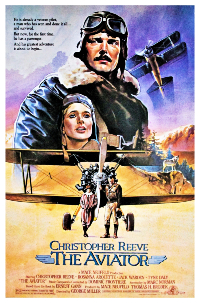Plot
Edgar Anscombe is an instructor at a US Army Air Corps flying school in 1918. While he is teaching a young pilot, the aircraft crashes during a landing attempt and bursts into flames. The student is killed, though Edgar survives.
Ten years later, Edgar is a Contract Air Mail pilot flying the rugged CAM-5 route between Elko, Nevada and Pasco, Washington. When asked to take a passenger, Edgar reluctantly agrees, revealing that the last time he had a passenger in his aircraft, it was the doomed trainee.
Tillie Hansen is outspoken and rebellious. She makes it clear that she does not want to go to her aunt's house, but her father demands it. He uses his influence as banker for the airline to secure passage for her. Tillie annoys Edgar with her questions, and he acts coldly towards her.
During the stopover at Boise, Idaho, Edgar's pilot friend, Jerry, changes the oil lines on the engine, but neglects to inspect his work after a call comes in for him. The tension between Edgar and Tillie continues to escalate, and when the flight resumes, Edgar decides to take a shortcut over the mountains, deviating from the normal route. However, the engine loses oil pressure and soon fails, causing Edgar to crash land on a remote ridge.
Tillie blames Edgar for stranding them, and Edgar calls Tillie a jinx. During the night, Tillie accidentally blows up the remains of the aircraft with a cigarette. Afterward, Edgar's anger subsides as he seems to accept the hopelessness of their situation.
The next day, Edgar goes out hunting and manages to shoot a rabbit with his pistol. However, while returning to camp he is attacked by a pack of wolves who steal the rabbit and badly injure his arm. Tillie manages to sew the wound shut and bandages his arm. Faced with the continued threat of the wolves, and since the remains of the aircraft have been destroyed, Edgar and Tillie decide to climb down the cliff to the canyon below.
During their descent, a search aircraft flies overhead. Edgar and Tillie jump on a ledge to try to signal the aircraft, but Tillie falls and breaks her leg. The two are forced to spend the night on the cliff face, and a mutual affection develops. The next day, Edgar carries Tillie to the canyon floor, where he makes a travois to haul her.
When Tillie spots some telephone lines, Edgar heads off to investigate, leaving Tillie his revolver. Meanwhile, one of the search pilots has determined the location of the crash, and flies toward the crash site. As Edgar returns to the clearing where he has left Tillie, he is again attacked by a wolf, within sight of Tillie. The rescuers fly overhead and spot Edgar, but are powerless to help. Tillie manages to crawl out of her travois and shoots the wolf, saving Edgar's life. They are rescued, with hints of a romantic relationship developing.
